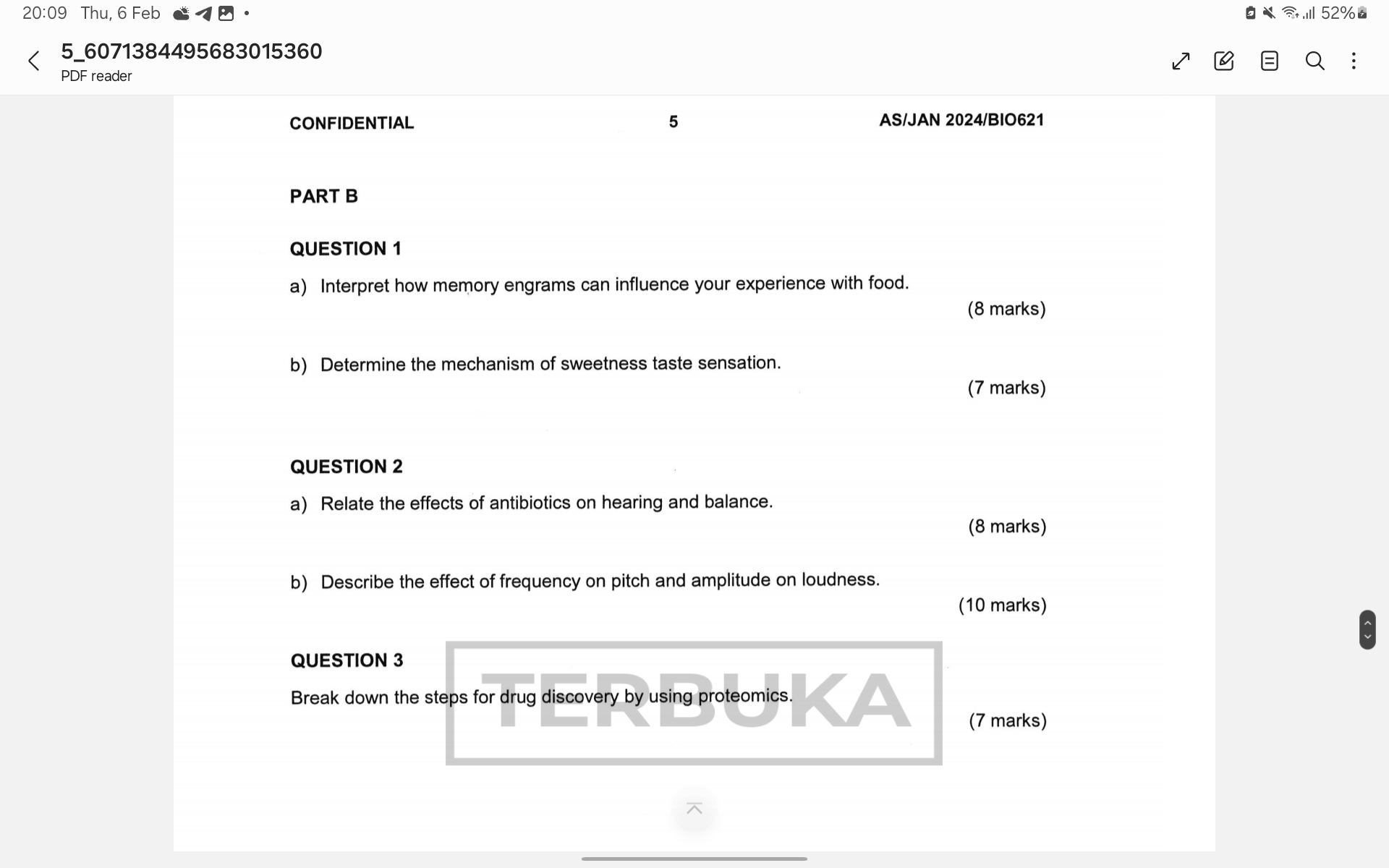Interpret how memory engrams can influence your experience with food. Determine the mechanism of sweetness taste sensation. Relate the effects of antibiotics on hearing and balance... Interpret how memory engrams can influence your experience with food. Determine the mechanism of sweetness taste sensation. Relate the effects of antibiotics on hearing and balance. Describe the effect of frequency on pitch and amplitude on loudness. Break down the steps for drug discovery by using proteomics.

Understand the Problem
The questions are asking about the influences of memory on food experiences, mechanisms of taste sensations, effects of antibiotics on hearing, and steps in drug discovery, indicating a focus on biology and neuroscience.
Answer
Memory engrams shape food experiences; sweetness via G-protein coupled receptors; antibiotics can damage hearing/balance; frequency affects pitch, amplitude affects loudness; proteomics aids drug discovery by targeting proteins.
1a) Memory engrams, which are neural circuits stored during experiences, can influence the experience with food by associating specific flavors or smells to past emotions or events, affecting preference and aversion.
1b) Sweetness taste sensation involves taste receptors on the tongue detecting sugars, which activate G-protein coupled receptors, initiating a signal to the brain that is perceived as sweet.
2a) Some antibiotics can damage hair cells in the inner ear, leading to ototoxicity, which affects hearing and balance by impairing the vestibular and auditory systems.
2b) Frequency affects pitch, where higher frequencies result in higher pitches. Amplitude affects loudness, with greater amplitude producing louder sounds.
- Drug discovery using proteomics involves identifying disease-related proteins, studying protein-protein interactions, validating drug targets, and assessing drug effects at a molecular level.
Answer for screen readers
1a) Memory engrams, which are neural circuits stored during experiences, can influence the experience with food by associating specific flavors or smells to past emotions or events, affecting preference and aversion.
1b) Sweetness taste sensation involves taste receptors on the tongue detecting sugars, which activate G-protein coupled receptors, initiating a signal to the brain that is perceived as sweet.
2a) Some antibiotics can damage hair cells in the inner ear, leading to ototoxicity, which affects hearing and balance by impairing the vestibular and auditory systems.
2b) Frequency affects pitch, where higher frequencies result in higher pitches. Amplitude affects loudness, with greater amplitude producing louder sounds.
- Drug discovery using proteomics involves identifying disease-related proteins, studying protein-protein interactions, validating drug targets, and assessing drug effects at a molecular level.
More Information
Memory engrams can dictate preferences based on past experiences. Sweetness involves specific receptor pathways. Antibiotics like aminoglycosides are known for ototoxic effects. Frequency and amplitude are fundamental properties of sound perception. Proteomics helps identify therapeutic targets by analyzing protein interactions.
Tips
Confusing pitch and loudness with frequency and amplitude. They are related but distinct properties.
AI-generated content may contain errors. Please verify critical information